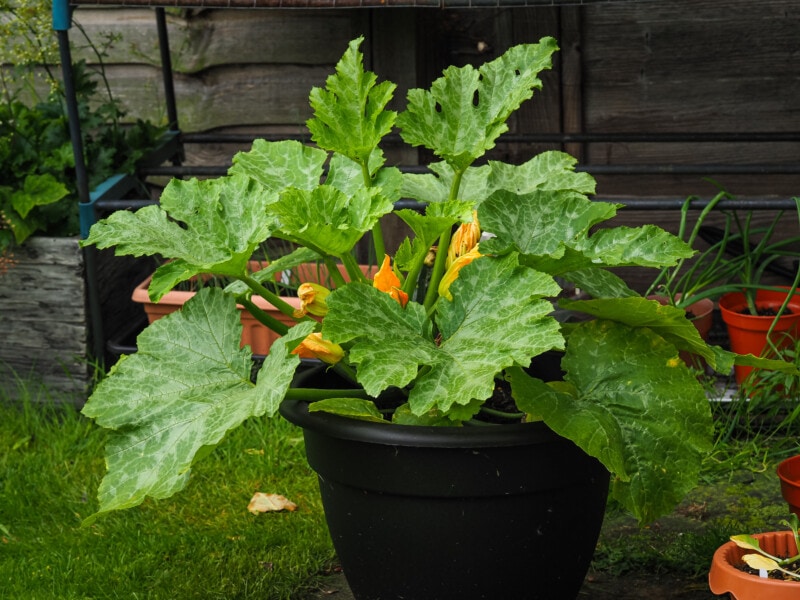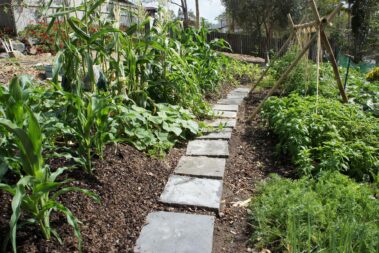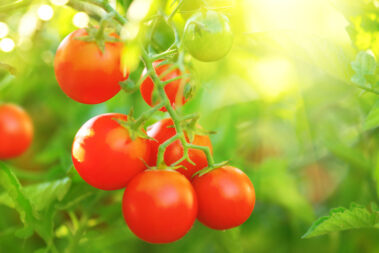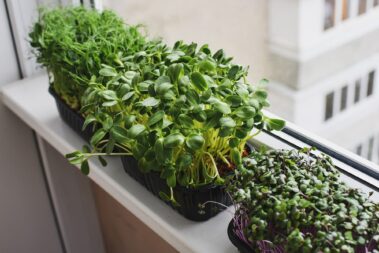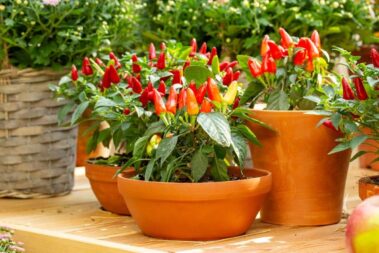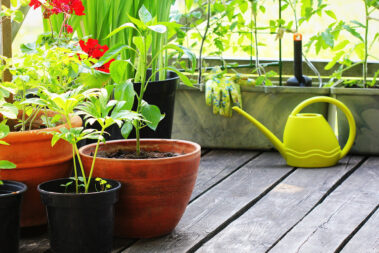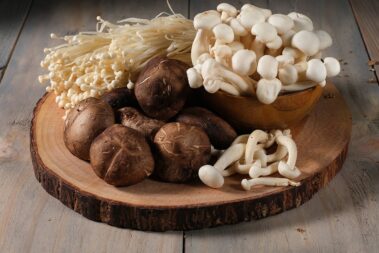Zucchini is one of the easiest and most prolific vegetables you can grow in a traditional garden. This begs the question, is it just as easy to grow these massive courgettes in containers?
Not exactly. But with a few pointers, it is absolutely possible to grow zucchini in pots and reap many of the same benefits.
In this article, we’ll show you how to grow zucchini in small spaces and give you some valuable tips to help you find success. We’ll also look at the best varieties for container planting (hint: you’ll want to think small) and walk through some common diseases and issues you might run into.
Table of Contents
Which Zucchini Varieties Grow Best in Containers?
The first and most important step to finding success growing zucchini in pots is to choose the right type.
Most zucchini varieties are available in two cultivator categories: bushy and vining.
Vining types produce long, snaking stalks. The fruit of these zucs is produced near the end of the stalk.
These varieties can get quite long and require a lot of space. In the garden, they’re generally grown on mounds with the vines moving downhill. But they can also be trained up trellising or grown in tomato cages to reduce their footprint.
Bush varieties, on the other hand, are much more compact. The leaves and fruits of these types all grow from one central point. This means they require less space and are easier to harvest.
As you can imagine, bushy zucchini plants are easier to grow in container gardens.
However, it’s still possible to grow viney varieties, assuming you use a large enough pot and are willing to spend the time training the vines to grow vertically.
Some of our favorite zuc and summer squash varieties to grow in container gardens are:
- Astia – This vining zuc produces compact, stumpy vines that are easy to corral and fruit that’s absolutely delicious.
- Black Beauty Heirloom – This bushy-type zuc produces fruit with dark green skin that you can harvest all summer long. The huge leaves on these plants can reach heights of four feet!
- Buckingham Patio – These bushy, yellow-skinned summer squash grow upright to save space and produce long golden fruit.
- Emerald Delight – These tasty, traditional-style zucs grow into compact plants that are disease resistant.
- Max’s Gold – This yellow-skinned squash variety forms bushy, petite plants that produce delicate fruit.
- Patty Pan – This summer squash isn’t generally considered a zucchini, but given its similar care requirements and stellar performance in pots, it’s worth mentioning here. Patty pans are yellow, round, flat, and scalloped at the edges.
- Crookneck – This is another tasty summer squash species that grow well in pots and tolerates a variety of conditions. Crooknecks have a creamy lemon coloration and are elongated with curved necks.
9 Tips for Growing Zucchini in Pots
Once you have your preferred varieties chosen, it’s time to get serious about creating your zucchini container garden.
Here are nine tips to help you find success with this prolific squash.
1. Find a super-sunny location
Zucchini like to bask in full sun.
Look for a location that gets at least six hours of direct light each day, with 10 hours being optimal. These plants don’t mind the heat either, so placing them along a south-facing wall typically works well. Just keep an extra eye on the soil moisture level during the hottest days and water more often if you notice the leaves wilting.
If you chose a vining variety, consider what kind of trellising system you’re going to use. Tall trellises are at risk of toppling your container, especially as the plant grows up it. If the pot is not large enough to offset the weight, you’ll need to anchor the pot to a railing or wall.
2. Pick a large pot
Regardless of whether you are planting a bushy or vining variety, you’ll still need a fairly large container.
Look for pots at least 12 inches deep and 18 inches across. Large plastic storage bins work well, but you’ll need to drill drainage holes in the bottom. You can also build planter boxes out of wood or corrugated steel (here are some ideas to get you started).
Some of the most compact types of zucs, such as the Buckingham patio, can grow in containers as small as five-gallon buckets. But, in general, bigger is better.
3. Fill your pot with quality potting soil
As with most vegetables in pots, choosing a quality potting soil is vital.
Unlike garden soil or fill dirt, potting soil is made up almost entirely of peat moss, bark, and perlite or vermiculite. This special mixture creates an airy, non-compact environment. This is extra important inside containers that don’t get the benefit of aerating bugs.
Potting soil also helps keep your plant’s roots moist without suffocating them in soggy conditions.
You can also make your own fertilizer by combining compost, peat moss, vermiculite, perlite, and other organic matter.
4. Sow seeds after the last frost date
Zucchinis are warm-season plants. This means they like to mature during the heat of summer and aren’t hardy in the face of cold weather.
You’ll want to sow your zucchini seeds a couple of weeks after the last frost in spring, usually in April or May, depending on your zone.
Start by planting a scattering of seeds, each at least 4 inches from the edges of your container and 1/2 inch deep. Place the seeds an inch below the soil surface. Once the seedlings have reached a few inches tall, thin the seeds back so that you have pairs of seedlings every eighteen inches or so.
For smaller containers, you may want to thin down to a single robust seedling to avoid crowding.
5. Or shop!
Zucs are also great candidates for buying in seedling form and transplanting directly into your pots.
Look for young plantings available in bio-pots that can be planted directly into the ground to avoid transplant shock. Do pay special attention to the variety when you pick your zucchini seedlings, as most sold in stores are better suited for gardens than they are pots.
6. Feed and water
Zucchini grow fast and large. This means they need a lot of sustenance to keep them going.
Be sure to water your plants frequently, especially as the weather warms. Stick your finger into the soil and water anytime the top inch or so is dry. Watering on a consistent schedule will help keep the plant healthy and the fruits from rotting or dying off prematurely.
Zucs also need monthly fertilization treatments when planted in pots.
Each time you water your container garden, important nutrients are pulled out of the soil and flushed away. To replenish these and keep your zucs healthy, add a balanced liquid fertilizer every three to four weeks.
7. Train vines as needed
If you’re growing viney-type zucs, you will need to train them to grow up a trellis or support cage.
Summer squash vines produce tendrils similar to pea vines that help them climb vertically. Unfortunately, these tendrils are not usually strong enough to hold the weight of the vine, especially once it starts bearing fruit.
For this reason, you’ll have to do most of the legwork to train and support your zuc if you want it to grow vertically.
The simplest way to do this is to place a heavy-duty tomato cage around the seedling while it’s still small. As the plant matures, gently guide the vine back inside the confines of the cage every few days. The maturing vine and fruit will rest against the cage, while the horizontal supports will help maintain space and airflow between the oversized leaves.
8. Harvest all summer long!
Zucchinis are known for their prolific production. They’ll start flowering around mid-summer and continue through the growing season.
Most varieties of zuc can be picked small for salads and for dipping raw. Or a little larger for sauteing, grilling, or adding to soup. And those giant ones that somehow hide until they’re the size of the club? Those are perfect for grating up and making into zucchini bread.
The more often you pick your zucs, the larger your overall zucchini harvest will be.
But don’t just harvest the fruits of your vines. The flowers can be eaten and are excellent sauteed and added to salads and pasta. To avoiding lowering your zuc yield, pick only the male flowers after they’ve produced pollen for a few days.
9. Prepare for frost
One benefit of a container garden is that you have the option to bring your plants indoors as the weather gets colder.
Unfortunately, given the size of containers zucchini need to grow, this isn’t always easy to do.
If there is a danger of frost in the forecast and you aren’t ready to let your zucs go, you can cover the containers with a sheet or use row covers to help protect your plants. Once the temperature heats back up in the morning, take the sheets off.
Common Problems You Might Face
Despite being easy to grow, zucchini and summer squash are prone to a number of issues that could affect your harvest rates. Here are some more common problems you’re likely to deal with when growing zucchini in pots.
- Malformed fruits – If you’re getting a lot of stumpy, undersized, or malformed zucs, odds are you’re dealing with a pollination problem. Squash produce male and female flowers and require insects to spread the pollen between the two in order to produce fruit. Including pots filled with bee-attracting flowers, such as lavender or mint, near your container garden will help with this issue.
- Powdery mildew – If you notice a whitish powder covering your zuc leaves, congratulations, you’re battling one of the most common zucchini problems: a fungus called powdery mildew. While it’s rare for this fungal disease to affect production, there are steps you can take to keep this ugly issue at bay. Assuring plenty of space and airflow between plants and drying off wet foliage will help your pants look and perform their best.
- Blossom end rot – Like nightshades, summer squash are prone to blossom end rot, which causes fruits to rot at the flower end before they have matured. This issue is caused by a lack of calcium uptake due to inconsistent watering. Assuring your pots have proper drainage, using fresh potting soil, and watering as soon as the top layer of soil dries will keep this problem from cropping up.
- Squash vine borers – Dying leaves with damage to the stalks is usually a sign of squash vine borers, a common pest that attacks these vegetables. These caterpillars, which mature to become moths, feed on leaf stems, resulting in leaf death and, in extreme cases, plant death. To kill and prevent squash vine borers and other squash bugs, spray the green parts of the plant with beneficial bacteria spray or cover the stalk bases with mulch to prevent moths from laying eggs.
How to Enjoy Your Crop
While it’s a bit more difficult to grow zucchini and other squash plants in pots, if you follow these tips, you’re likely to get quite a harvest. In fact, most people who grow these garden vegetables end up with more zucchini than they know what to do with.
To help you enjoy every last bit of your harvest, here are some of our favorite zuc-centric tips and recipes!
- One of the easiest and most delicious ways to prepare zucchini is to throw them on the grill. Be sure to marinate them for a while to give them a great boost of flavor.
- If you have a spiralizer, zoodles (i.e. zucchini noodles) are about the greatest thing since sliced bread.
- Ratatouille and vegan Thai noodles are just a couple of the delicious squash dishes mentioned in this best-of list.
- Zucchini isn’t the most common Mexican food ingredient, but it does add quite a splash to this vegan taco salad.
- Whether you only include it in your homemade marinara sauce or make your noodles out of it too, zucchini should always be a part of your spaghetti dinner.
- Curry-marinated veggie kabobs… Need we say more?
- A great way to use up much of your summer harvest at the end of the season, homemade minestrone soup is perfect for those cool early fall days.
- And if the zucchinis are coming in faster than you can eat them, store some in the freezer for your late summer and early fall meals.

